
ENASA MODELS

Of the eighty-four chassis manufactured by ENASA for Pegaso Z-102 twenty were bodied by the factory ENASA. Of these twenty, about half were berlinettas and the rest were divided among the spider Rabassada, Pedralbes, Montjuich, "El Cúpula" and the two speed records vehicles known as Bisiluro or "Bitorpedos".
PEGASO Z-102 BERLINETTA ENASA (1951)
The Z-102 project was developed with the utmost discretion to accentuate the media impact and presented in the hall of the factory on 20 September 1951. The car drawing is the first Z-102 made, it is the prototype with doors opening forwards, without nerves in the wheel arches and side vents, then added his successors. The only unit that has louvered louvers in the bonnet and in the rear fin behind the wheels.
Pegaso Z-102 Berlinetta Enasa Prototype (1951)
After the prototype, ENASA manufactured a four units preproduction which manufacturing began in mid-1951, they all had the smooth side (without nerve above the wheel arches) and the front grille to the same level as the headlamps (they were modified moving forward regarding headlights later). Its body is naming BE 1P, also known as "Barcelona" model.
Pegaso Z-102 Berlinetta Enasa 1P (1951)
The first configuration of the following model was a "false cabriolet", as it is one of the first units built, was in the act of presentation of the Z-102 first in La Sagrera (Barcelona), then in Paris on the occasion of the Salon Motor. It Is later converted by ENASA in Berlineta 2nd series. It was originally equipped with engines of 2,472 cc 75x70, then still in test period, the drivers his ENASA wheel Celso Fernández and Joaquín Palacio alternated. This model won the first prize of elegance in Dauville in 1953, then was painted in ivory white and carried a 2.8 engine. Currently it is painted in green as shown in the following picture and is the Pegaso Z-102 oldest preserved. Exhibited at Autoworld Brussels (Belgium) 2018.
Pegaso Z-102 False Cabriolet Enasa 1P (1951)
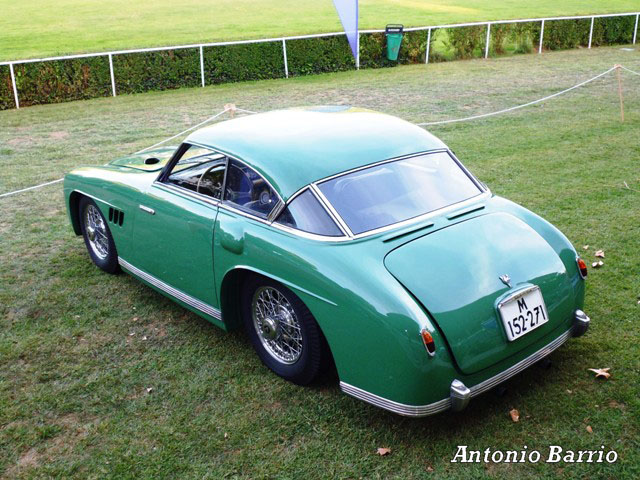
Pegaso Z-102 Berlinetta Enasa 1P (1951)
The next car was injured in late 1951 at the mountain pass of Ordal by Celso Fernández testing. Reconstructed in early 1952 with new front precursor BE 2 is still in perfect condition. Exposed in ClassicAuto Madrid 2018.
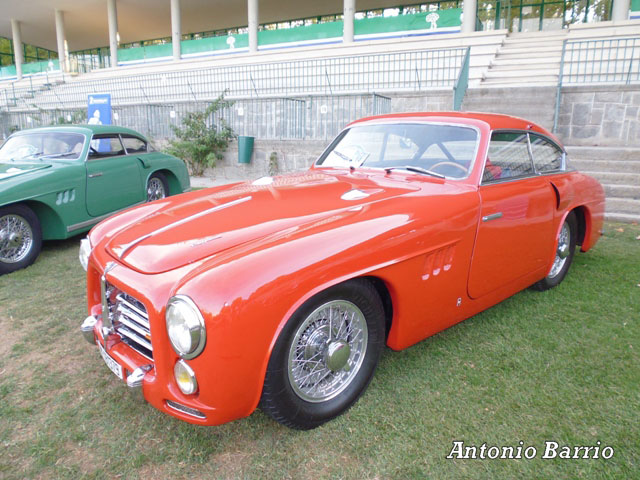
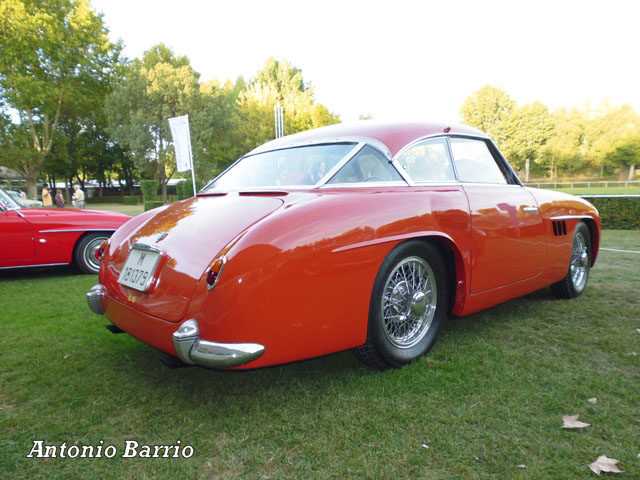
Pegaso Z-102 Berlinetta Enasa 1P (1951)
This model of the second series is the first Z-102 with RHD, to save weight was equipped with aluminum doors (with sliding windows). The front grille with horizontal slats was replaced by the two crossbars (which has since identify Pegaso) and air intakes above the license plate.
Pegaso Z-102 Berlinetta Enasa 2 (1952)
The following drawing vehicle was used by ENASA for testing and catalog photos. No vents behind the front wheels and has closed steps wheel. It failed to sell and was scrapped in late 1954.
Pegaso Z-102 Berlinetta Enasa 2 (1952)
The first owner of the next Pegaso makes reform front by Galo Mateo in 1957, Serra style SS 2. It was restored in 1957 situation, painted blue, red interior. Then his owner becomes body in convertible, removing SS 2-style on the front. It is currently in perfect conditions and running.
Pegaso Z-102 Berlinetta Enasa 2 (1952)
The Z-102 drawn below is one of those that participated in the 1952 Monaco Grand Prix, painted in red with the hood in yellow, with lightened competition doors, sliding windows and a divided "v" shaped windshield. In 1953, a motor with a compressor was installed for testing, with its corresponding nozzle in the bonnet, which it currently maintains, although it no longer has the compressor.
Pegaso Z-102 Berlinetta Enasa 2 (1952)
Change ownership and color several times, during his stay in the US, painted in blue, participated in Concourses d´Elegance of Pebble Beach. Currently acquired by Jaime Berger, it has participated in the 2023 Amelia Island Concours d'Elegance.
Pegaso Z-102 Berlinetta Enasa 2 (1952)
It was presented at the Monaco Historic GP 2024 painted in red color and it has been the star of the Salón Classic Madrid 2025.
Pegaso Z-102 Berlinetta Enasa 2 (1952)
PEGASO Z-102 BERLINETTA ENASA SPECIAL (1952)
Experimental vehicle for testing and developing engines, the Pegaso Z-102 Berlineta Enasa 2nd Special series, is a unique example coachbuilded by ENASA in April 1952. Built entirely in aluminum in order to reduce weight, a negative aspect of the design of the Pegaso Z-102 Enasa.
Pegaso Z-102 Berlinetta Enasa Special (1952)
The Sagrera Experiences department continued to lighten the structure of the model, cutting the wheel arches thus facilitating the ventilation of the engine and the brakes, giving it such a unique appearance that the employees called it “El Cangrejo” (“The Crab”).
Aesthetically derived from the standard Enasa berlinetta, it differs from it in many details, the most significant being its narrower and recessed wheel arches at the rear and a much more aggressive general appearance. the windshield in two "V" sections, spartan interior, without trim or upholstery and special competition seats, the windows were made of Perspex or Plexiglas. The hood had two circular openings to allow access to the oil and water filler. “El Cangrejo” was equipped with 2,500 and 2,800 cc engines, occasionally mounting a low-pressure Roots compressor, carrying with each of them a different engine hood, with a nozzle when it had a compressor, with grilles when it did not. Used for experimental purposes and tests of all kinds, it covered more than 100,000 km in less than a year and a half of life.
Celso Fernández participated in the XIII hill climb to the Rabassada, held in Barcelona on May 17, 1953. The car started with two different numbers, since the race was to be held on May 3, having corresponded to Celso Fernández the number 126, however, this race was suspended by the organizers due to an intense downpour of water that fell in Barcelona the morning of the race. Moved to the 17th, a new registration period was opened, which brought in a smaller number of participants, with bib number 84 finally corresponding to Celso Fernández, the number with which he officially participated in the race. Equipped with the 2,500 cc engine and mounting a Roots compressor, elements from a “Bisiluro” tested by Celso Fernández the previous week in Montlhery, the “Cangrejo” will qualify in 6th position, achieving 2nd place among the Sport cars, behind Joaquín Palacio, who, driving a Pegaso Spyder Rabassada, would achieve the first absolute victory for ENASA, facing rival vehicles such as Maserati F2, Cisitalia 1100 "monoposto", Jaguar XK 120 and Allard.
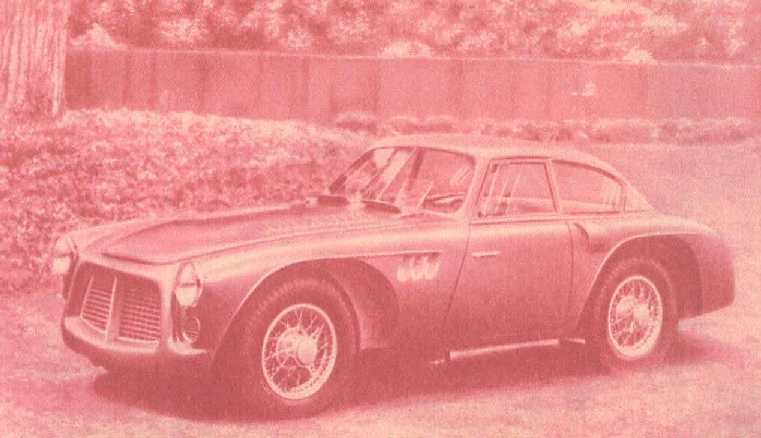
Pegaso Z-102 Berlinetta Enasa Special (1952)
Used in a multitude of tests and articles that appeared in the specialized press between 1952 and 1953 "The Autocar", "Motor Sport", "The Motor" and "Revue Motor", the "Cangrejo" was destroyed in an accident and subsequent fire, in December 1953, being, in the opinion of Celso Fernández, usual driver and tester of the brand, "the best of the Pegaso Z-102 manufactured".
PEGASO Z-102 BERLINETTA CUPULA (1952)
Enasa stylists designed two berlinetta Cúpula following the Touring Superleggera technique as vehicles for exhibitions. A new -plexiglas type- material for manufacturing the large rear window dome shaped. The first unit, ivory color, was exhibited in the salons of London and Paris and later scrapped.
Pegaso Z-102 Berlinetta Cúpula 1 (1952)
The second unit was presented at the New York International Auto Show 1953 through US distributor Brewster. The model was acquired by Santo Domingo dictator Rafael Leonidas Trujillo, so it is also known as the Dominican. Another name given to this model is Rosa de Thé due to yellow to red gradient at the bottom. On the death of Trujillo, its new owner removed the dome and makes spider. In 1976 a new owner of Mexico, with the help and collaboration of "Friends of the Pegaso Sport", restores, building of new roof and dome of it.
Pegaso Z-102 Berlinetta Cúpula 2 (1952)
Evert Louwman buy this car and presents in year 2015 at "Concorso d'Eleganza Villa d'Este" in yellow color, with a red stripe tires after an extensive restoration. In 2016 it win the prize for best sports at Amelia Island Concours d'Elegance (Florida) and has been voted Car of the Year by International Historic Motoring Awards. Now it can be visited at the National Automobile Museum Netherlands (Louwman Museum). Exhibited at the Guggenheim in Bilbao on the occasion of the Motion exhibition in 2022.
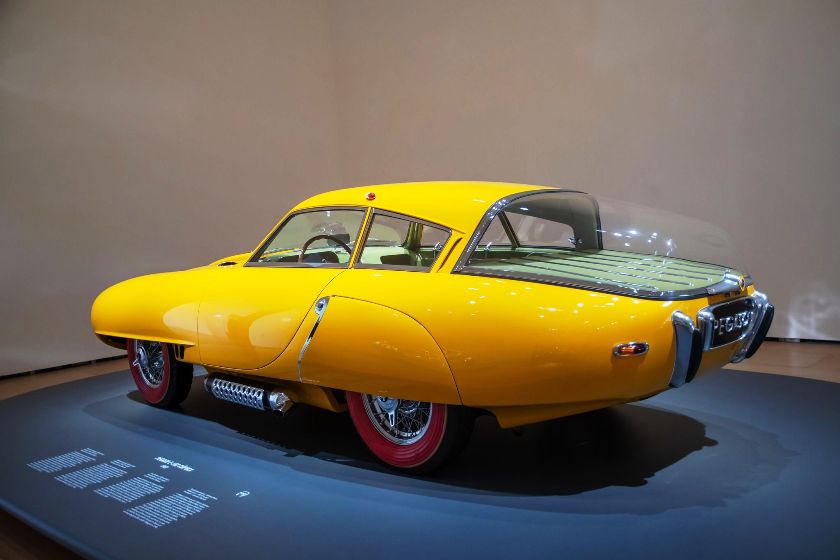
Photography by Unai Ona
Pegaso Z-102 Berlinetta Cúpula 2 (1952)